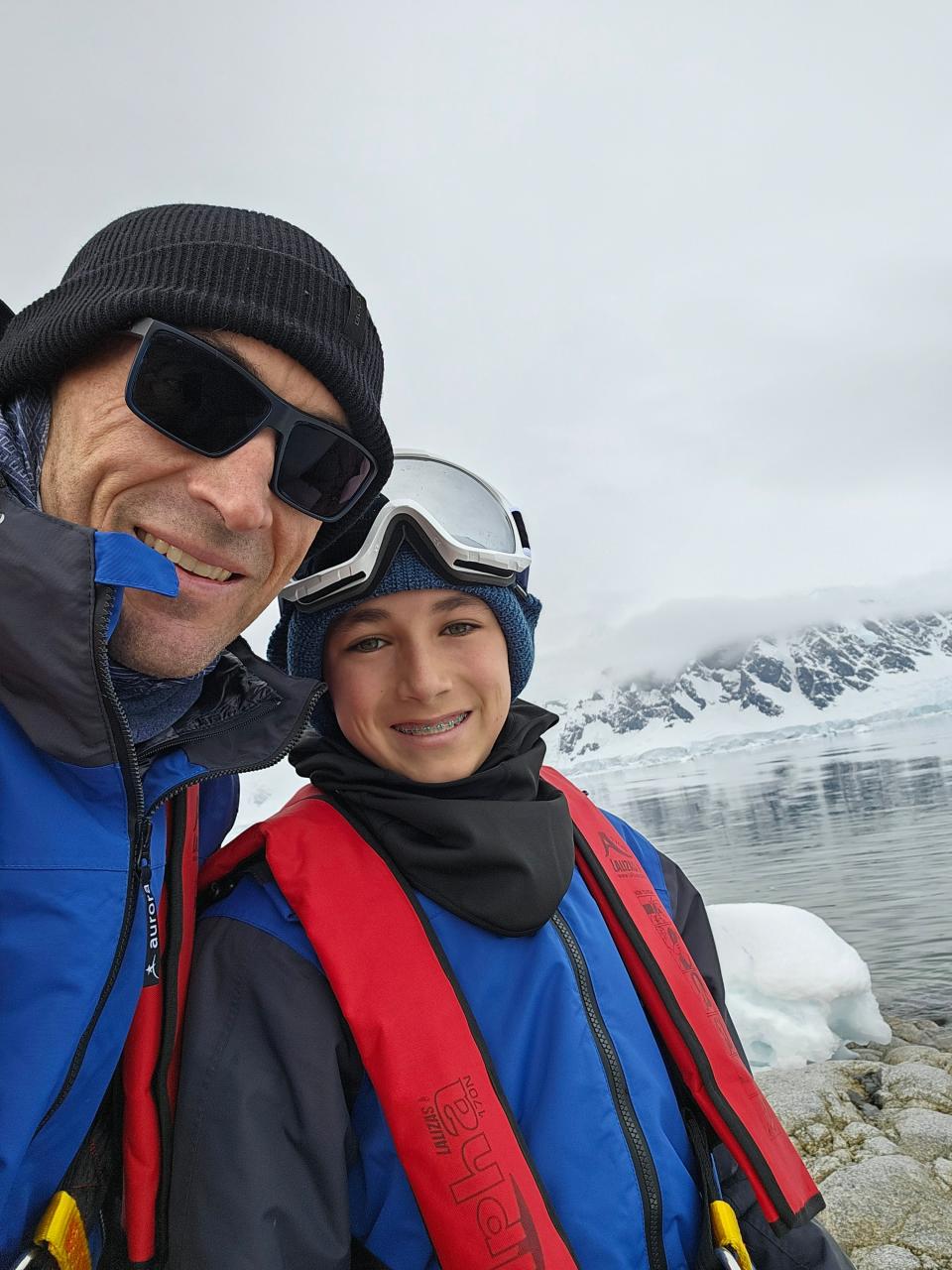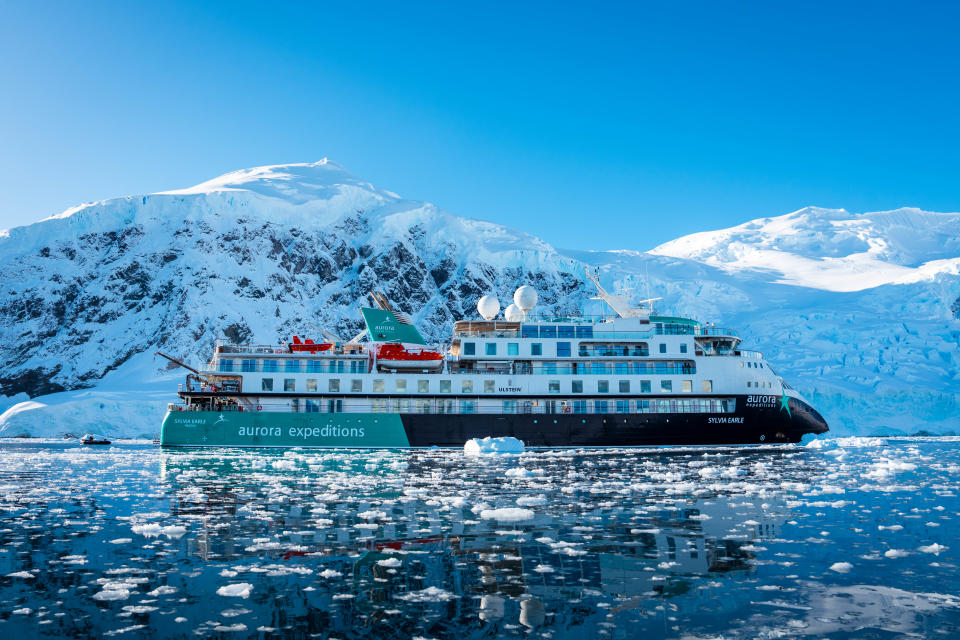It's not for everyone: 3 things to know about Antarctica expedition cruises
When James Rameson stepped on land in Antarctica during an expedition cruise last month, it’s possible it was the first time anyone had ever set foot on that part of the ice-covered continent.
When the Zodiac boat arrived at the rocky shore, the expedition leader told the Santa Barbara, California, 13-year-old and his fellow passengers – of which I was one – that our group on board Aurora Expeditions’ Sylvia Earle ship may have been the first to visit that particular spot.
Rameson, who took the cruise as a birthday gift with his father, Tyler, 49, made the most of his sudden pioneer status. “I walked over to this random spot, and I'm like, ‘Look, dad, no one has ever been here,’ ” he told USA TODAY. “It's like, ‘I’m the first person to set foot right here,’ which I thought was pretty cool.”

Not every trip can offer that. “One of the most incredible things about visiting Antarctica is the feeling of exploration and being somewhere very few people have been before,” said Kristin Winkaffe, a luxury travel designer and founder of Winkaffe Global Travel.
But the continent has become an increasingly popular destination. More than 71,200 people visited the ice during the 2022-2023 season, up from around 24,000 in 2021-2022 in the wake of COVID-19 and just under 56,000 in 2019-2020, according to the International Association of Antarctica Tour Operators. There has been a surge in inventory, too, with new ships and itineraries from a range of expedition lines.
Here are three things to know about taking an Antarctica cruise:
I did a polar plunge in Antarctica. It meant more than I expected.
1. You’ll have to cross the Drake Passage – maybe
Most expedition cruises to Antarctica depart from Ushuaia, Argentina, and cross the infamous Drake Passage. The waterway is notoriously treacherous, and travelers could experience a rough “Drake Shake” or calm “Drake Lake” during the journey, which takes about two days to complete each way (you may have seen videos of it on TikTok).
My trip fell somewhere in the middle on the way down with waves as high as about 13 feet. “A lot of people, even if they haven't experienced seasickness before, tend to experience seasickness on the Drake Passage,” Winkaffe said.
Expedition ships tend to be small, but larger cruise ships visit Antarctica as well and guests may feel the impact of the waves less thanks to their size. However, travelers should note that ships carrying more than 500 passengers are not permitted to take them on land, according to the International Association of Antarctica Tour Operators.
Some cruise operators offer flights over the Drake Passage. But Winkaffe warned that those trips are not only “exponentially more expensive” – Antarctica cruises can range from around $5,000 per person to more than $20,000 and those flights could add between $5,000 and $10,000 – but also less reliable since weather in the area can be unpredictable.
“There is the possibility that (ships will) get canceled or delayed due to weather but they're able to cross during worse weather than the flights are,” she said.
Lindblad Expeditions is the latest operator to add the option, allowing guests to skip potentially rough waters and shave time off their trip. CEO and founder Sven-Olof Lindblad said last month at the luxury travel trade show ILTM Cannes that the brand had long held off due to concerns passengers wouldn’t take off and land as scheduled, but that technology has made the flights more predictable, Travel + Leisure reported.
2. You have to be flexible
Given the extreme climate, Antarctica cruises may not always go as planned.
During my trip with Aurora, the expedition team shared an intended itinerary for the next day each night with guests, with the caveat that it was only a Plan A. After they assessed the conditions upon arrival, we sometimes explored by Zodiac rather than attempting to go on land or relocated altogether.
That may be an adjustment for travelers who have been on other types of cruises with detailed itineraries from start to finish. “Antarctica is a totally different beast in that you basically just have to accept that you’re going on a tour to Antarctica and not get attached to any specific place,” Winkaffe said.

She recommended going into the trip with a “sense of adventure,” and that travelers avoid Googling specific locations ahead of time to minimize disappointment if they don’t make it there. Destinations may also look different from their photos, particularly because the environment changes throughout the year (the Antarctica cruise season runs from October through March, encompassing its summer).
“Everybody has FOMO (fear of missing out) and everything, but everybody’s experience is different,” said Jeff Nagel, the assistant expedition leader on my trip.
3. Keep the environment in mind
As harrowing as the Antarctic environment can seem, it’s also vulnerable. Scientists have already warned of dire impacts due to climate change.
That makes visiting with care especially important. On board the expedition with Aurora, we received information on the International Association of Antarctica Tour Operators guidelines and followed biosecurity protocols, like cleaning and having our gear inspected to avoid transporting nonnative species and scrubbing our boots after landings (the ship even played songs like Taylor Swift’s “Shake It Off” while we twisted our feet against rubber mats to remove debris).
“We are aware that, of course, in spite of all the work we do to make it as sustainable … as possible, we do have an impact,” said Mario Placidi Spring, the expedition leader on my trip.
What is wave season?: Why you should book your next cruise now
Winkaffe recommended doing research before booking and choosing a cruise operator that is putting effort and money toward operating sustainably.
“I'd like to believe that through our educational programs and (other programming) on board that we are creating ambassadors, and people are going home and maybe thinking about those small changes they can make in their life that will protect these areas and protect the world as a whole,” Nagel added.
Editor’s note: The reporter on this story received access to this expedition from Aurora Expeditions. USA TODAY maintains editorial control of reviews.
Nathan Diller is a consumer travel reporter for USA TODAY based in Nashville. You can reach him at ndiller@usatoday.com.
This article originally appeared on USA TODAY: 3 things to know about Antarctica expedition cruises

